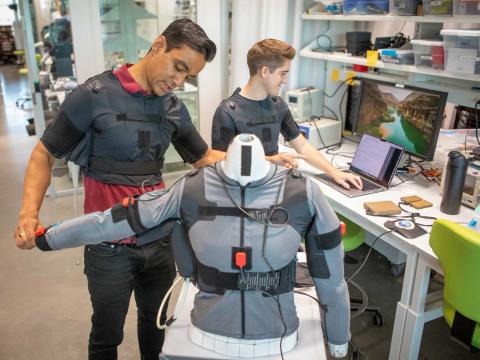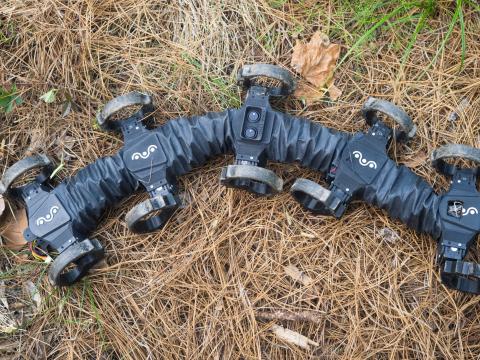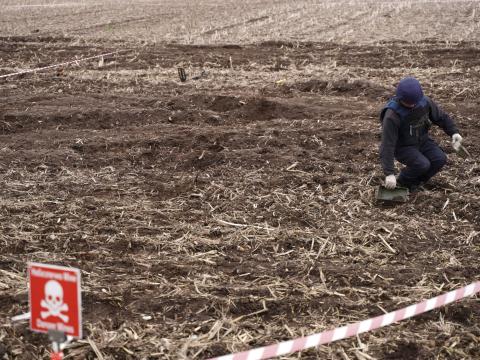Army Aims for Unmanned Airborne ISR Incremental Improvements
By the end of the 2023 fiscal year, the U.S. Army expects to begin building Increment 1 of its Future Tactical Unmanned Aircraft System (FTUAS) to replace the RQ-7B Shadow unmanned aircraft. Increment 1 will, in turn, be replaced beginning as early as 2025 by Increment 2, which is expected to improve on the open, modular approach.
The FTUAS is designed to offer a vertical takeoff and landing, runway-independent, reduced acoustic signature aircraft that can be easily transported while providing commanders with on-the-move reconnaissance, surveillance and target acquisition capabilities, according to an Army press release. The system is expected to provide an array of advantages over its Shadow predecessor, which Army officials sometimes refer to as an intelligence, surveillance and reconnaissance (ISR) workhorse because of the vast number of operational missions it has flown.
For example, the FTUAS can essentially be set up anywhere and operate in any environment without the Shadow’s cumbersome ancillary equipment, such as the catapult launcher, Humvee-mounted ground control station, tactical automated landing system that guides it back to the runway, and the arresting cables and netting to catch it as it lands.
“The Future Tactical UAS is going to provide that same level of ISR capability. However, it’s going to be in a vertical takeoff/vertical landing, runway-independent system. What that means is that these aircraft are going to the brigade air combat teams, and they can actually now move with the brigade combat teams and stay in step with them,” explained Lt. Col. Olin Walters, the Army project manager for tactical unmanned aircraft systems. One system can fit on two pallets and be loaded inside a CH-47 helicopter. “It provides a more expeditionary capability. It’s a great opportunity for them to be able to move through the battle space quickly and not be tied to a runway.”
The more equipment, the more possibility of errors, the colonel pointed out. “It’s a lot of touchpoints for soldiers where we can have errors being made. The possibility of losing an air vehicle goes up higher the more ancillary equipment you have in the battlespace, and the more difficult it is to move that system from one location to another.”
During a one-year risk reduction demonstration, brigade combat teams used the systems under combat-like conditions at the National Training Center (NTC), Fort Irwin, California, and the Joint Readiness Training Center (JRTC), Fort Polk, Louisiana. They were able to jump to new locations more often than they could with the previous system.
“What we saw at NTC and JRTC is that these units were jumping up to seven times in a two-week period. That’s unheard of for a Shadow platoon. Typically, when they go in, they set that up at one location. It takes at least four hours to get the system set up at that runway, and then they stay at that one location,” Col. Walters said. “These systems, you can pick them up, move them and operate them at any location you want to. From box to flight is about 30 minutes, so a significant upgrade over what we currently have.”
FTUAS offers other tactical advantages over the Shadow. “It’s a lot quieter as well. Survivability goes up exponentially because you’re not telling everybody where you’re at when you’re taking off or you’re landing or you’re in-flight. You’re not going to warn your targets as you’re flying overhead. For example, the Shadow version two is much louder, and you have to fly it at much higher altitudes in order to mask your acoustic signature,” the colonel added. “These systems are a lot lighter, can fly a lot lower and get better resolution at a much closer range.”
In fact, during the training center demonstrations, the FTUAS allowed friendly or “green” forces to eliminate the opposing forces so quickly that those playing the adversarial role complained they were being robbed of training opportunities. “It was very frustrating for the opposing force because we would detect and destroy them before they could do anything to the green forces,” Col. Walters recalled.
And without the more complex launching system, soldiers found they could launch and operate the FTUAS from virtually anywhere. “These guys were launching off of rooftops. They were launching out of combat outposts or combat outpost-like areas, very confined locations. We were seeing them utilizing systems on the go. They were driving in a vehicle and controlling the aircraft as they were driving along,” he reported.
The service was expected to announce contracts to multiple vendors for Increment 2 of the system by the end of this month. Increment 2 will be the program of record and should begin fielding in two years, ultimately replacing the first version.
“The intent would be that we would start fielding Increment 1 the end of fiscal year 23, and then that would stay in the field until it was eventually replaced by Increment 2 sometime in 2028,” Col. Walters offered. “It depends on the Army re-arm schedule, when that unit comes back up ready to field for Increment 2—whatever unit we may field to. But the intent is that all the increment ones would be out of the field in ’28 and replaced by Increment 2, which starts fielding in late fiscal year 2025.”

For Increment One, the Army chose to use the JUMP 20 medium unmanned aircraft system provided by AeroVironment Incorporated. A company press release touts the system as “the first fixed-wing unmanned aircraft system capable of vertical takeoff and landing to be deployed extensively in support of U.S. military forces.” The JUMP 20 delivers more than 14 hours of endurance, a standard operational range of 115 miles and has a usable payload capacity of up to 30 pounds. It also features a common autopilot and ground control system architecture providing a highly customizable, modular platform that can be custom configured to meet operational or customer requirements, the press release adds.
As of December, the service was in the middle of testing its single Increment 1 system at different locations and was still short of funding for an additional seven systems officials hoped to purchase. “Currently, we’re building toward a flight operation test here at Redstone Arsenal. We also are working toward environmental testing. We’ll put the system in different environments—extreme cold or heat, shaker tables, those kinds of things—to make sure that if we get a decision to go ahead with fielding, that system will be survivable and maintainable out in the field,” Col. Walters reported.
Increment 2 is the last planned version of the aircraft, but that could change if necessary. “As of right now, there are only two increments that we have. However, we have built into our acquisition strategy the flexibility for the Army to make a decision as to where they want to go from here. If they receive requirements that push us in a different direction than we went with Increment 2, there’s the option for us to build in an Increment 3 if that becomes a necessity,” Col. Walters added.
With the next increment, the Army will add assured navigation, positioning and timing and laser target designation not included with Increment 1. The service also intends to double down on the modular, open systems approach designed to allow easy adoption of new technologies or the ability to tailor the payload based on the mission. For example, if the FTUAS is needed for a daytime mission, it might carry an extremely high-definition daytime video capability. If, however, the flight begins during the day and continues after nightfall, a day and night sensor will be inserted. Additional options might include a mapping capability or other sensors.
“Increment 2 is going to provide a more modular, open system approach. It’s going to build in those interfaces so that we can swap payloads and swap components easier,” the colonel explained. “We want to give them the capability to swap payloads as the mission dictates but also to quickly integrate a new upgraded payload in the future without having to go back to the [original equipment manufacturers] and rewrite software or rewrite hardware interfaces.”





Comments